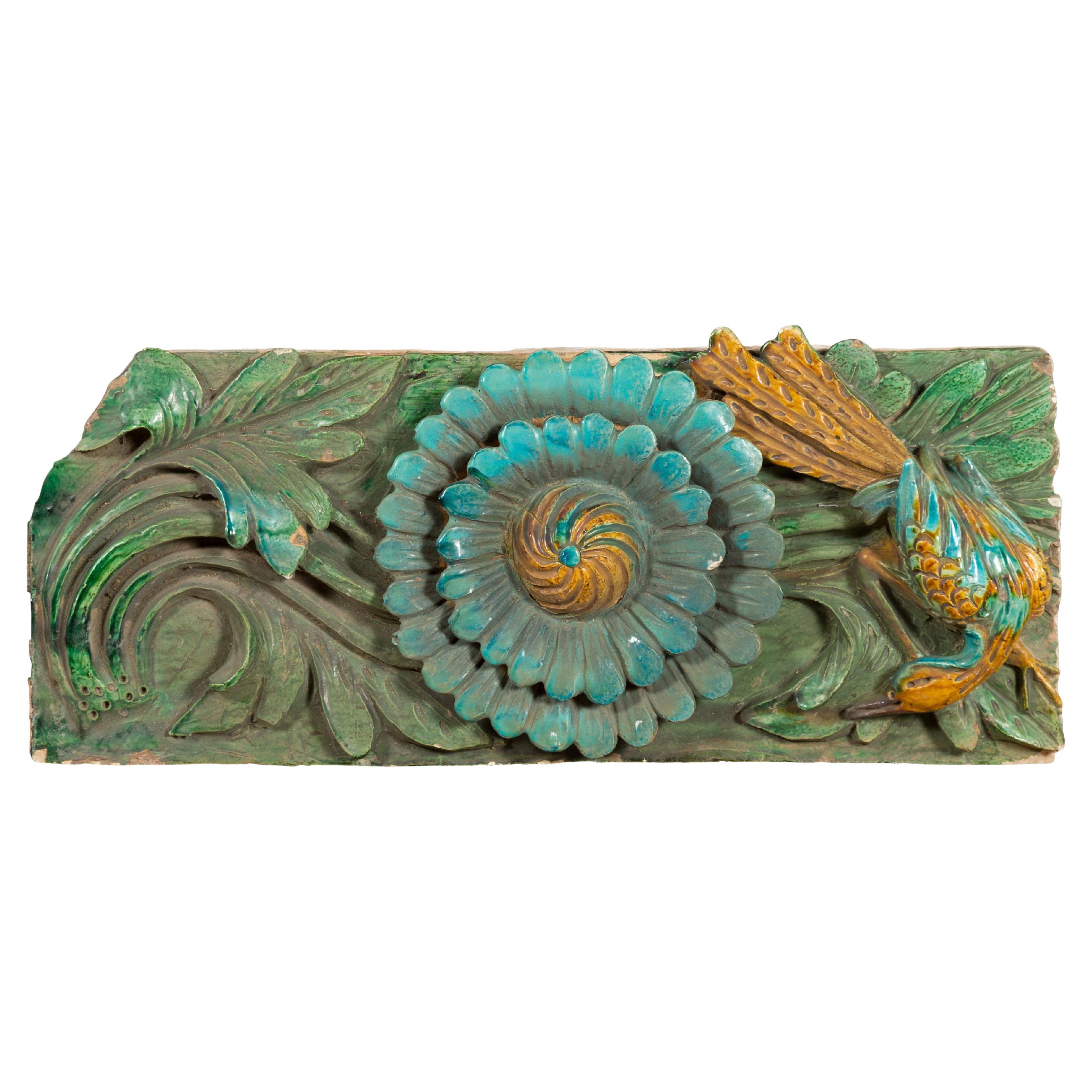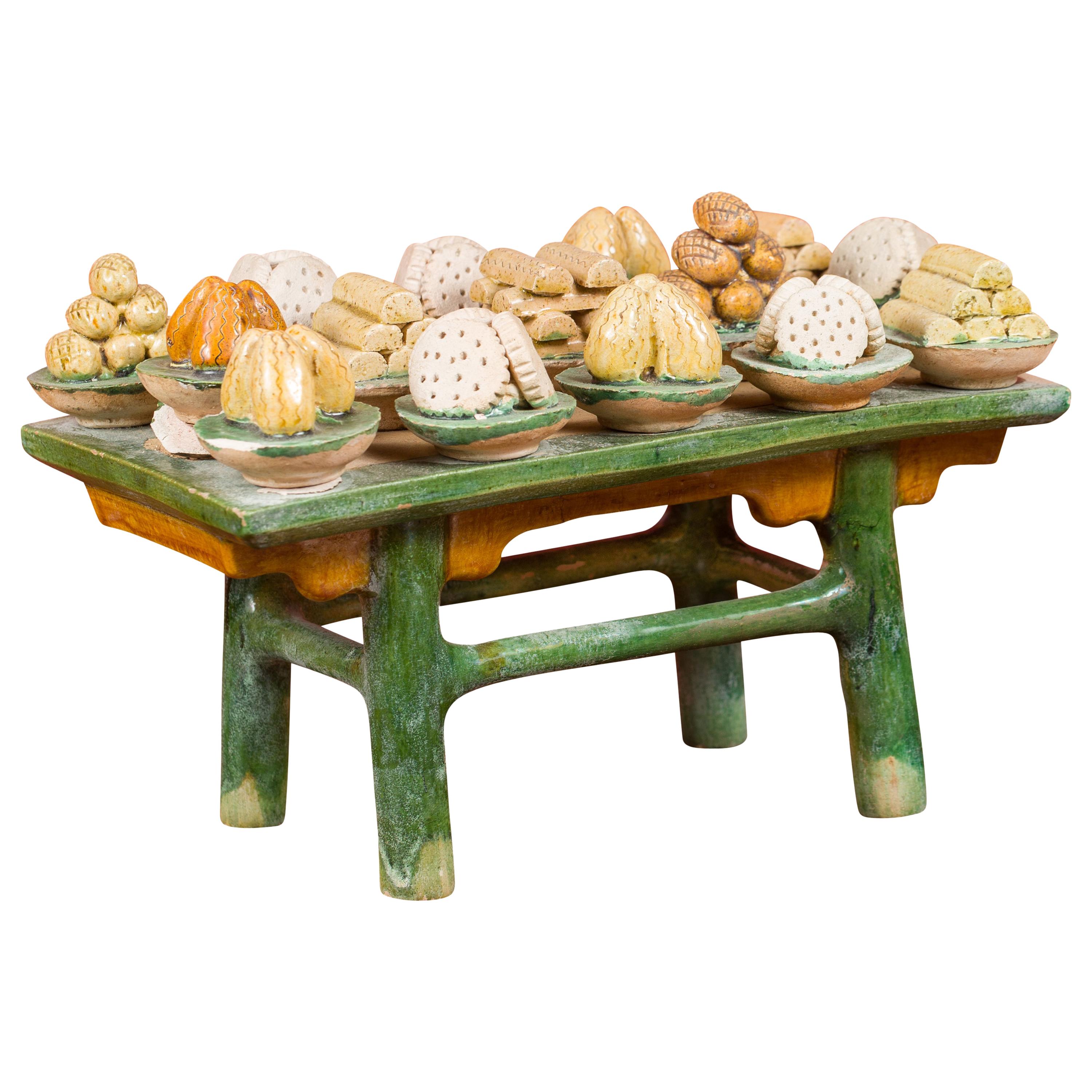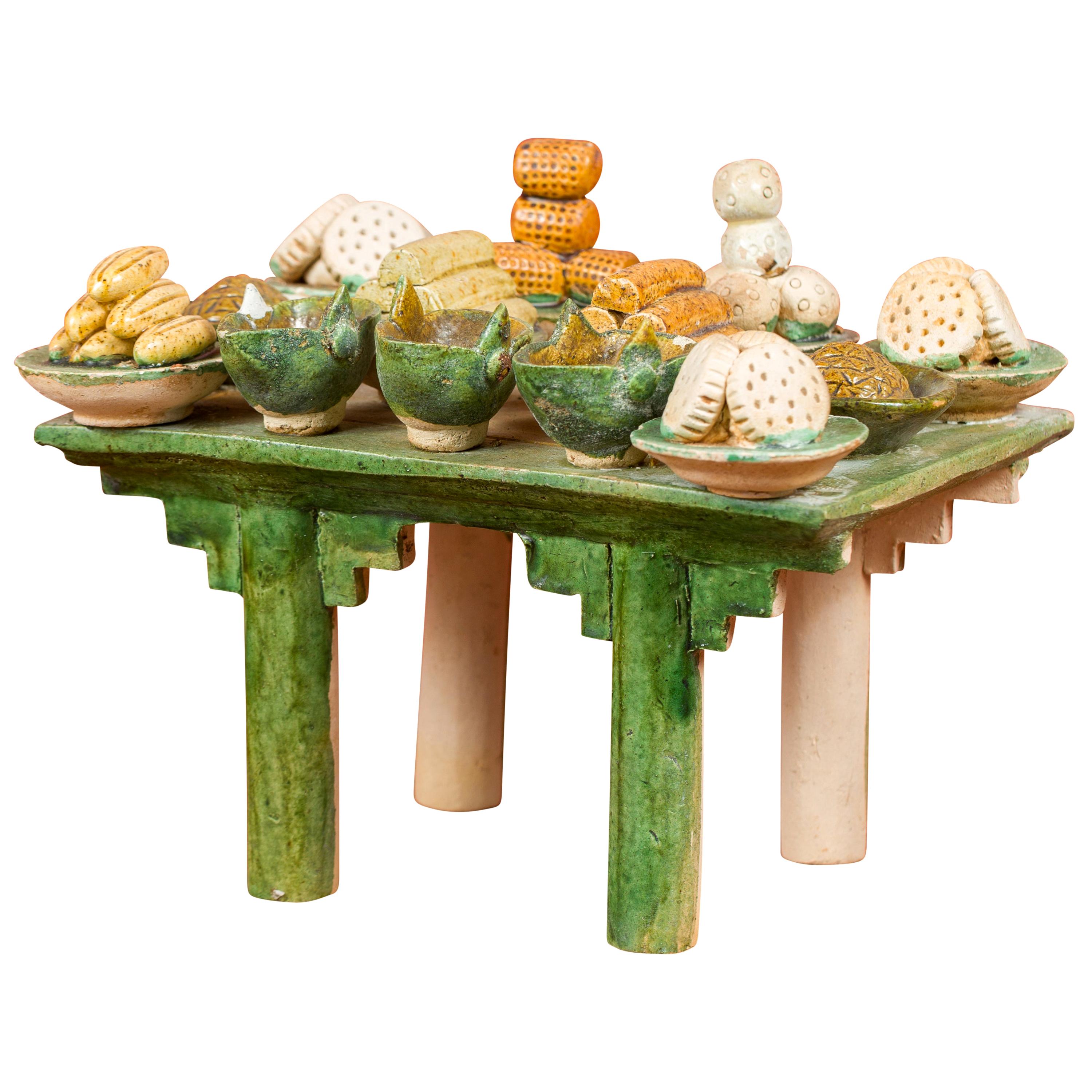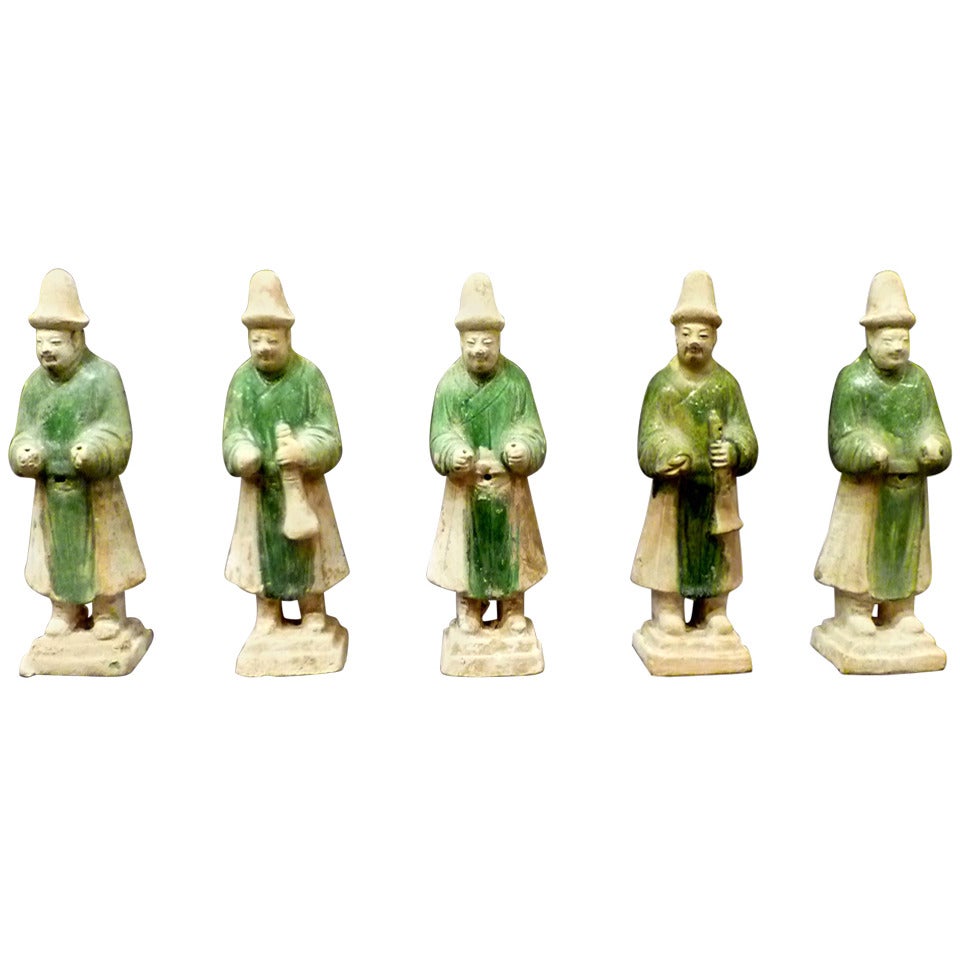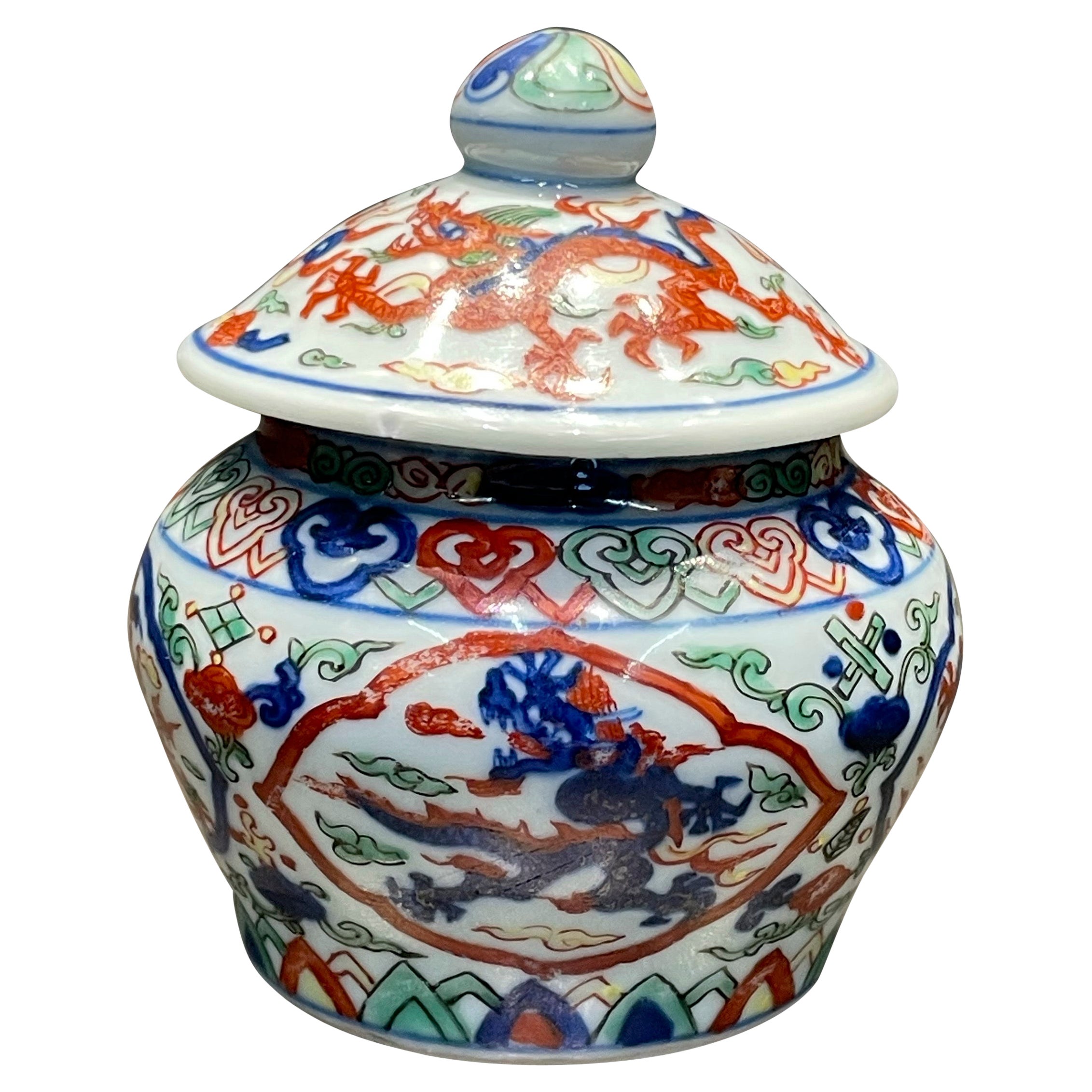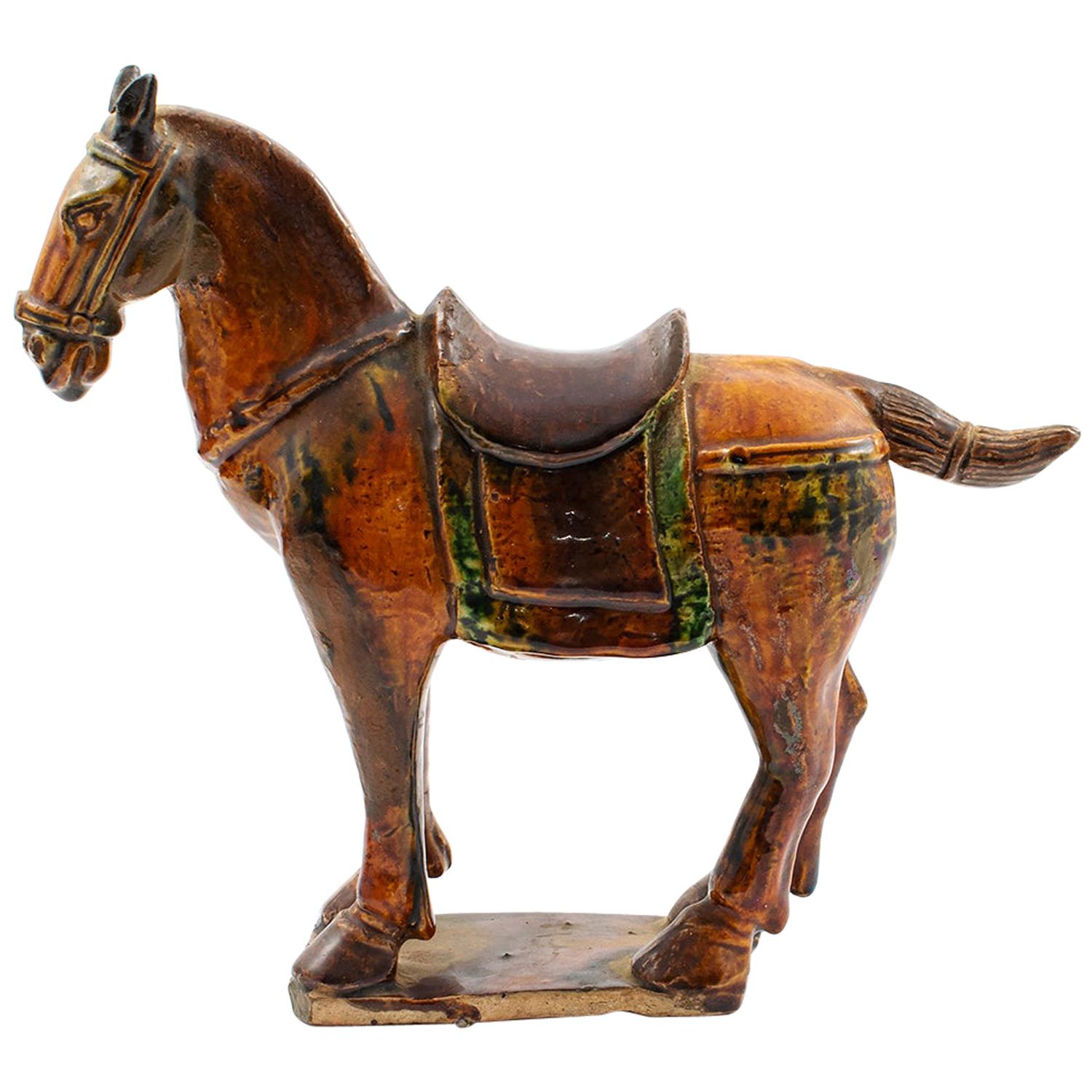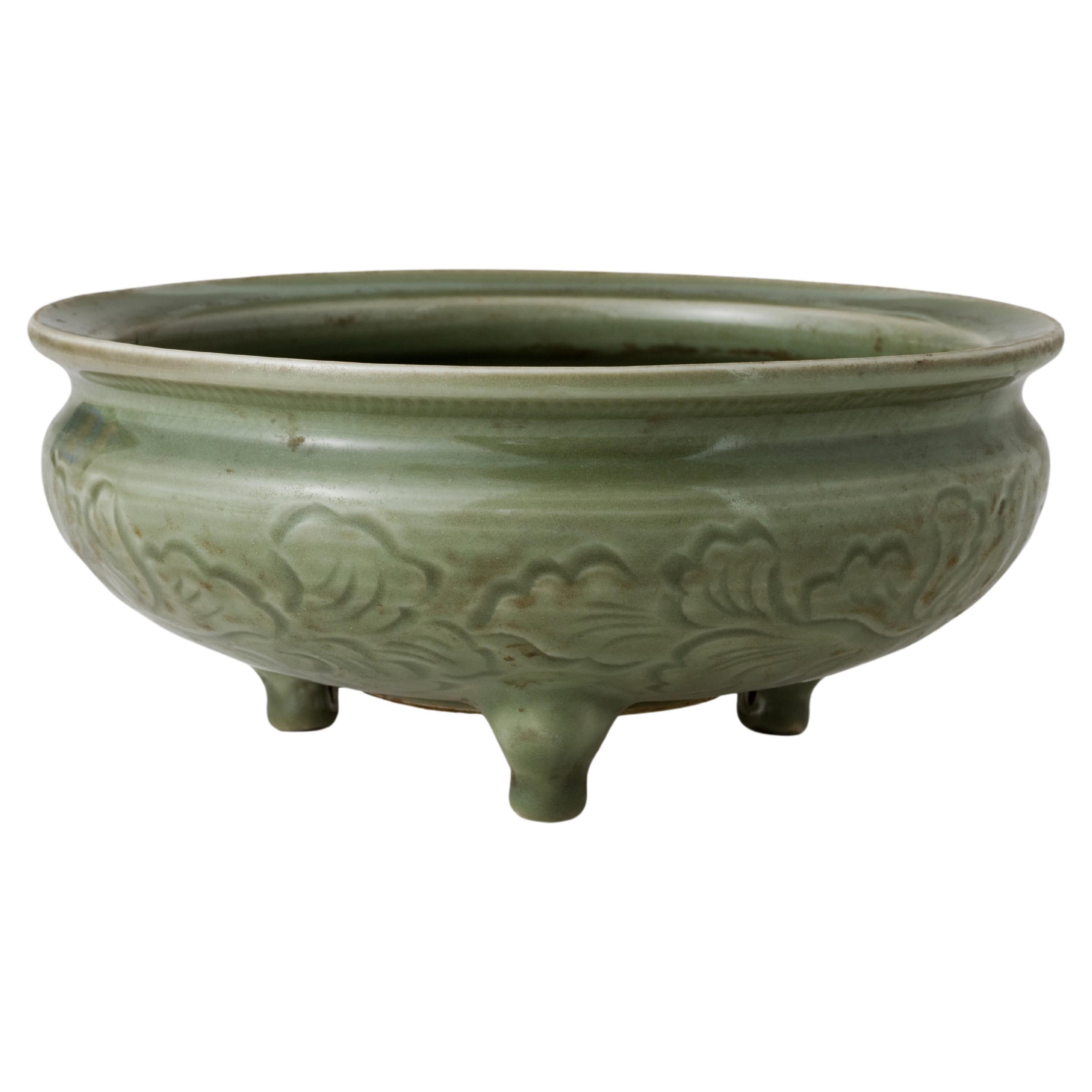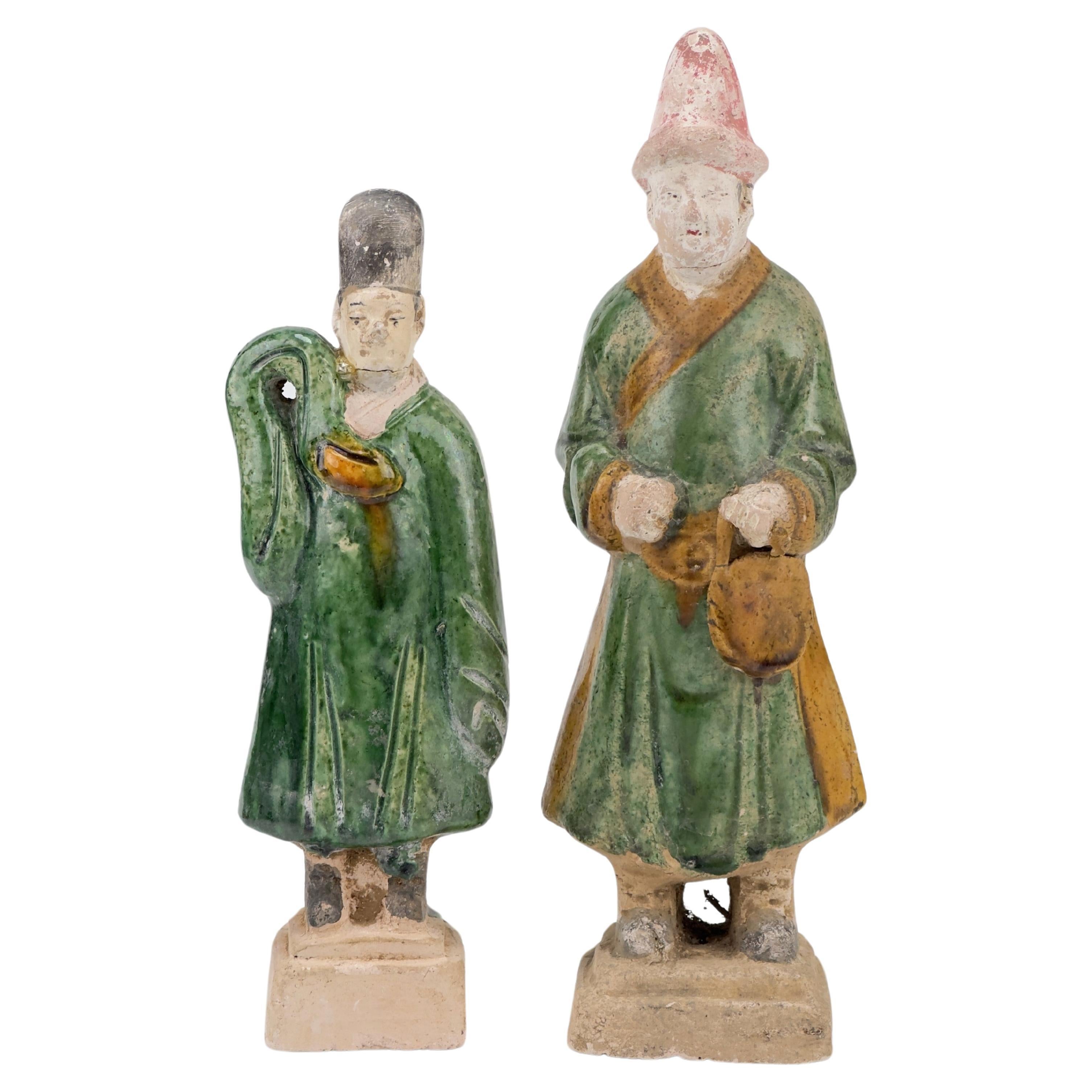
Pair of Ming Glazed Terracotta Temple Wall Tiles Depicting a Dragon
View Similar Items
1 of 4
Pair of Ming Glazed Terracotta Temple Wall Tiles Depicting a Dragon
About the Item
- Dimensions:Height: 15.25 in (38.74 cm)Width: 48 in (121.92 cm)Depth: 3.5 in (8.89 cm)
- Sold As:Set of 2
- Style:Ming (Of the Period)
- Materials and Techniques:Terracotta,Glazed
- Place of Origin:
- Period:
- Date of Manufacture:1368-1644 AD
- Condition:Extremely Fine Condition.
- Seller Location:Beverly Hills, CA
- Reference Number:Seller: X.02691stDibs: LU232336234033
You May Also Like
- Chinese Ming Dynasty 17th Century Glazed Terracotta Sancai Temple Roof TileLocated in Yonkers, NYA Chinese Ming Dynasty period temple roof tile from the 17th century, with turquoise glaze, bird and flower motifs. Created in China during the Ming Dynasty which ruled from 1368 to ...Category
Antique 17th Century Chinese Ming Antiquities
MaterialsTerracotta
- Chinese Ming Dynasty 17th Century Three-Color Glazed Terracotta Temple Roof TileLocated in Yonkers, NYA Chinese Ming Dynasty period temple roof tile from the 17th century, with turquoise finish, bird and flower. Created in China during the Ming Dynasty (1368-1644), this ancient templ...Category
Antique 17th Century Chinese Ming Antiquities
MaterialsTerracotta
- 6 Elegant Ming Dynasty Court Attendants in Glazed Terracotta, China 1368-1644 ADLocated in San Pedro Garza Garcia, Nuevo LeonA fine set of a six court attendants as in the Forbidden City of Beijing, elegantly dressed in a Green & Red Daopao – a traditional men’s formal attire from the Ming Dynasty dated 1368-1643 A.D. – with glazed robes and Red Pigment remains in their hat and belts. They stand in an honorary posture atop a red plinth, some with orifices in their hands, where spirit objects were placed to comfort or satisfy the deceased. The heads are detachable, as often seen on the larger figures from this period. They are accompanied by a Certificate of Authenticity, and Certificate of Expertise by Jean-Yves Nathan - a leading authority specialized in Far East Archaeology from the CEDEA (The European Confederation of Art Experts). Burial figurines of graceful dancers, mystical beasts, and everyday objects reveal both how people in early China approached death and how they lived. Since people viewed the afterlife as an extension of worldly life, these figurines, called mingqi, sometimes referred as “spirit utensils” or “vessels of ghosts” disclose details of routine existence and provide insights into belief systems over a thousand-year period. The Ming dynasty was the ruling dynasty of China – then known as the Empire of the Great Ming – for 276 years (1368–1644 AD). Founded by Chu Yuan-chang, the rebel leader that was successful in removing the mongols from the throne. Chinese control was re-asserted in China and eastern Asia. Literature became more important, schools were created, and the justice system was reformed. The Ming dynasty is described by some as "one of the greatest eras of orderly government and social stability in human history,” was the last imperial dynasty in China ruled by ethnic Han Chinese. The practice of burying ceramic objects with the deceased went into decline from the 10th to the 14th Century AD. There was a revival in placing miniature representations of glazed terracotta objects such a furniture, food offerings, horses, miniature statues...Category
Antique 15th Century and Earlier Chinese Ming Antiquities
MaterialsTerracotta
- Ming Dynasty 15th or 16th Century Chinese Glazed Terracotta Funeral Table MingqiLocated in Yonkers, NYA Chinese Ming dynasty period glazed terracotta funeral table mingqi from 15th-16th century with food in dishes. Created in China during the Ming Dynasty, this terracotta funeral table showcases a typical Chinese altar, painted in green with tempera and adorned with a lovely variety of modeled and painted miniature foods such as cakes and breads. Called Mingqi, these kinds of terracotta models were traditionally placed in Chinese burials...Category
Antique 16th Century Chinese Ming Antiquities
MaterialsTerracotta
- Chinese Ming Dynasty 15th or 16th Century Glazed Terracotta Funeral Table MingqiLocated in Yonkers, NYA Chinese Ming dynasty period glazed terracotta funeral table mingqi from 15th-16th century with food and drinks. Created in China during the Ming Dynasty, this terracotta funeral table showcases a typical Chinese altar, painted in green with tempera and adorned with a lovely variety of modeled and painted miniature food and drinks such as cakes. Called Mingqi, these kinds of terracotta models were traditionally placed in Chinese burials...Category
Antique 16th Century Chinese Ming Antiquities
MaterialsTerracotta
- Set of Six Ming Dynasty Green Glazed Pottery Statue of AttendantsLocated in Greenwich, CTA set of six green glazed pottery statue of attendants, Ming dynasty 1368-1644.Category
Antique 16th Century Chinese Ming Antiquities
MaterialsPottery

